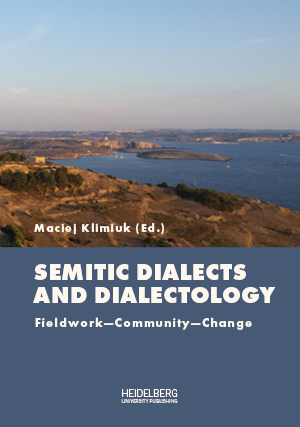Zitationsvorschlag
Lizenz (Kapitel)

Dieses Werk steht unter der Lizenz Creative Commons Namensnennung - Nicht-kommerziell - Weitergabe unter gleichen Bedingungen 4.0 International.
Identifier (Buch)
Veröffentlicht
The Pronominal Suffixes After Two Consonants in Cairene Arabic: A Historical Overview
Grammars and textbooks of Cairene Arabic dating from the nineteenth century show two sets of suffixes after two consonants: the suffixes as used in modern Cairene Arabic: -aha, -ukum and -uhum, and a set with the vowel i between word and suffix: -iha, -ikum and -ihum. This second set of suffixes started to disappear at the end of the nineteenth century. The vowel i in -iha, -ikum and -ihum is an epenthetic vowel which is inserted between the two consonants at the end of the word (e.g. ism) and the suffixes -ha, -kum, -hum in order to break up the cluster of three consonants. However, the origin of the vowels a and u in the suffixes
-aha, -ukum and -uhum is disputed. Some scholars, such as Birkeland (1952) and Diem (1991), argue that these vowels are remnants of old case endings, while others such as Owens (2006) and Watson (2002) claim that they are the result of vowel harmony, in which the epenthetic vowel is influenced by the vowel in the
following syllable. This paper will use historical written sources of Cairene Arabic to investigate the occurrences of these suffixes before the nineteenth century. Then, nineteenth-century sources are used to show the decline and disappearance of the suffixes with i. Finally, the two theories concerning the origin of the vowels of the suffixes will be discussed in light of these findings.
Keywords Cairene Arabic, Egyptian Arabic, historical dialectology, pronominal suffixes, language change






